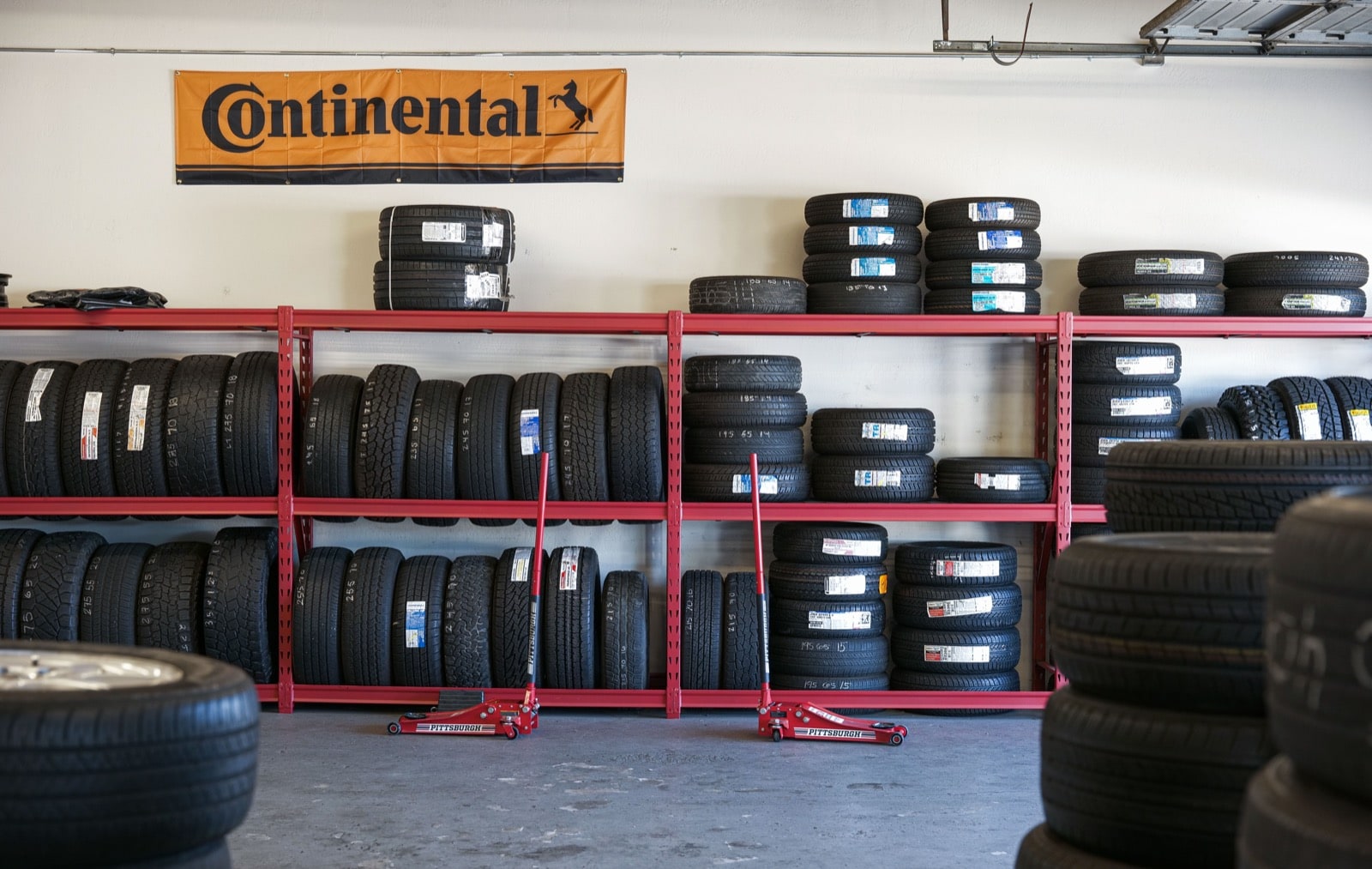The Science Behind Tire Repair Service and Safety And Security
When it concerns the complex globe of tire maintenance and safety, there exists a realm of scientific research that typically continues to be hidden by the average vehicle driver - tire tracks morris il. The materials that make up a tire, the influence of tire stress on general safety, the implications of walk wear, the intricate characteristics of tire grip, and the often-overlooked importance of correct wheel positioning all play vital roles in making sure a vehicle runs securely and efficiently. As we navigate with the complexities of tire fixing and safety, it comes to be obvious that a much deeper understanding of these clinical concepts is not just helpful however crucial for each motorist when traveling
Tire Composition and Capability
What materials compose the composition of tires, and just how do these parts add to their performance on the road? Tires are intricate items, usually made from a mix of rubber substances, fabric, steel cords, and various other chemical ingredients. One of the most usual type of rubber used in tires is synthetic rubber, which supplies longevity and resistance to put on and tear. The fabric layers, typically made of polyester, rayon, or nylon, give stamina and security to the tire framework. Steel cables are included to boost the tire's strength and help it maintain its shape under various road conditions.
The rubber substances offer grasp and traction, permitting the tire to stick to the road surface and supply stability during velocity, braking, and cornering. Generally, the cautious selection and mix of these materials make sure that tires can execute properly and securely on various roadway surfaces and problems.
Effect of Tire Pressure on Safety And Security
Keeping correct tire pressure is crucial for making sure optimal safety and security and efficiency while driving. The influence of tire pressure on safety can not be overemphasized. Underinflated tires are prone to getting too hot, which can lead to tire blowouts, especially at high speeds. Furthermore, reduced tire pressure impacts the handling and responsiveness of the vehicle, boosting the danger of accidents, especially throughout emergency situation maneuvers. On the other hand, overinflated tires have much less call with the roadway surface, lowering traction and causing uneven endure the tire treads. This endangers the automobile's security and stopping efficiency, posturing a considerable safety and security danger. Effectively inflated tires additionally play a critical function in gas effectiveness, as underinflated tires can raise moving resistance, bring about reduced gas mileage. Frequently checking and keeping the proper tire pressure not just makes certain safety and security however additionally extends the life expectancy of the tires, reducing substitute expenses in the long run.
Footstep Put On and Its Ramifications
Proper monitoring of tire walk wear is crucial for guaranteeing optimal efficiency and safety on the roadway. As tires wear down, the deepness of the tread reduces, reducing the tire's capability to maintain traction, particularly in slippery or damp conditions. The walk pattern and deepness play an essential duty in funneling water far from the tire to avoid hydroplaning and keeping hold on the road surface.
Irregular wear may suggest concerns with tire suspension, rising cost of living, or placement components. Use signs are developed right into the tire tread and become visible when the walk deepness gets to a certain low factor, showing the demand for prompt substitute.

Comprehending Tire Traction Characteristics
Checking tire walk wear not only makes sure optimal performance and safety and security but also directly impacts the grip dynamics of the tires on various road surfaces. Tire grip is a crucial facet of automobile handling and safety, as it figures out the hold between the tires and the roadway. Traction dynamics differ relying on roadway conditions such as dry sidewalk, wet roadways, snow, or ice.

Recognizing tire grip characteristics is vital for chauffeurs to adapt their driving actions according to the road problems. tire shop near me. Consistently checking tire walk depth and condition can dramatically improve grip efficiency, making sure safer driving experiences throughout numerous surfaces
Relevance of Proper Wheel Alignment
Making sure proper wheel alignment plays an essential function in maximizing car efficiency and prolonging tire longevity. Appropriate wheel placement includes readjusting the angles of the wheels to producer specs, guaranteeing that they are perpendicular to the ground and alongside each other. When positioning is off, it can lead to unequal tire wear, decreased gas Our site effectiveness, and compromised handling.
Among the essential advantages of preserving proper wheel positioning is enhanced managing and stability. Misaligned wheels can cause the lorry to draw away, influencing guiding control and overall driving experience. In addition, correct placement promotes even tire wear, stopping premature tire substitute and conserving on maintenance prices over time.

Final Thought
In conclusion, the science behind tire fixing and security is critical for keeping car performance and guaranteeing vehicle driver security. By recognizing tire structure, stress, tread wear, grip dynamics, and wheel placement, chauffeurs can avoid crashes and lengthen the lifespan of their tires.
The materials that compose a tire, the impact of tire pressure on overall security, the implications of walk wear, the elaborate characteristics of tire traction, and the often-overlooked value of appropriate wheel placement all play vital functions in making certain an automobile runs securely and effectively. On the various other hand, overinflated tires have less call with the roadway surface area, lowering grip and triggering uneven wear on the tire treads. try this Routinely inspecting and preserving the correct tire pressure not just makes certain safety however likewise expands the life-span of the tires, conserving on replacement expenses in the lengthy run.
Keeping an eye on tire tread wear not only ensures ideal performance and safety yet also directly influences the traction dynamics of the tires on various road surface areas. Tire grip is an essential facet of vehicle handling and safety, as it determines the grip in between the tires and the road.